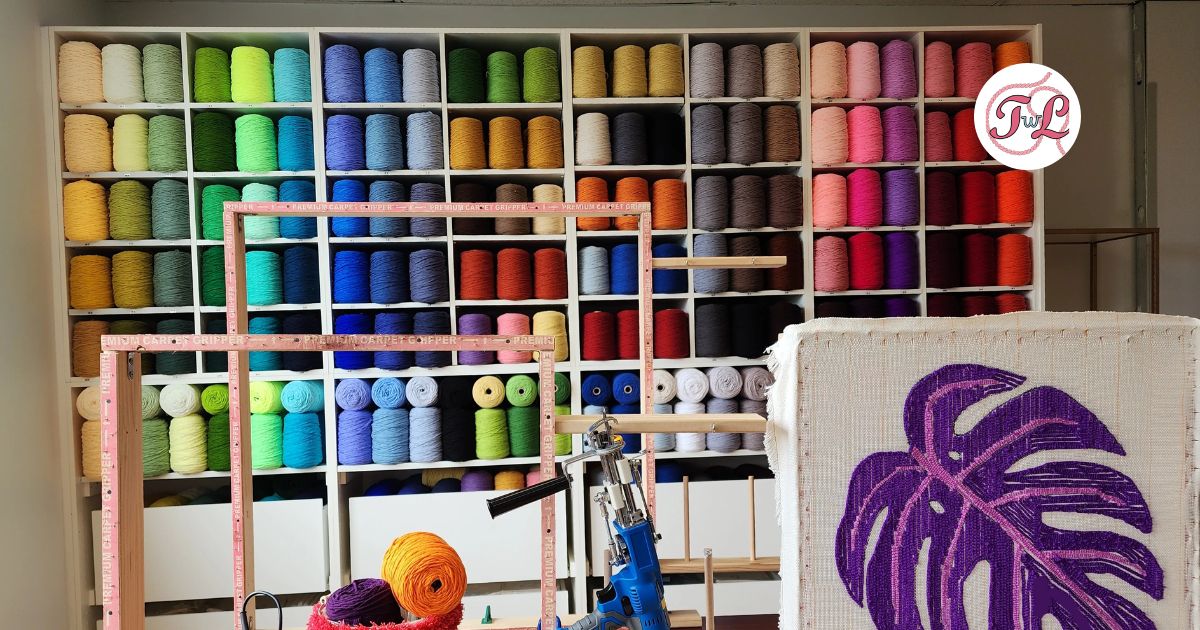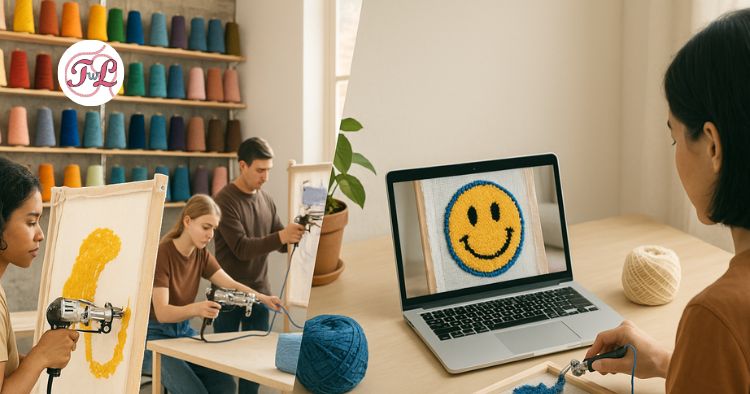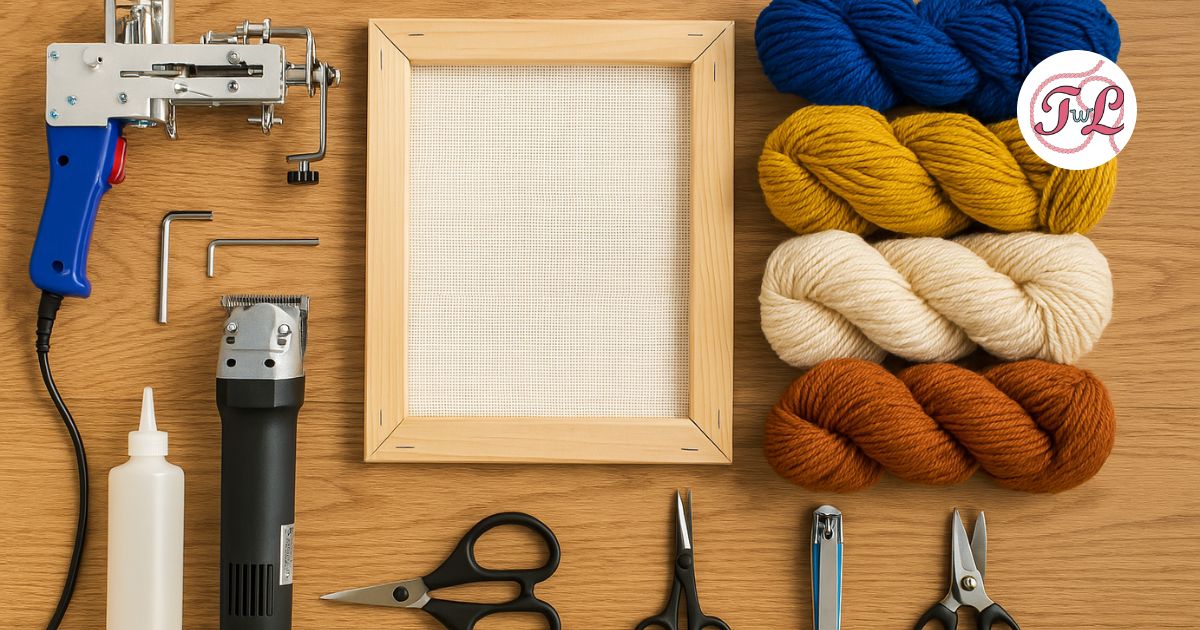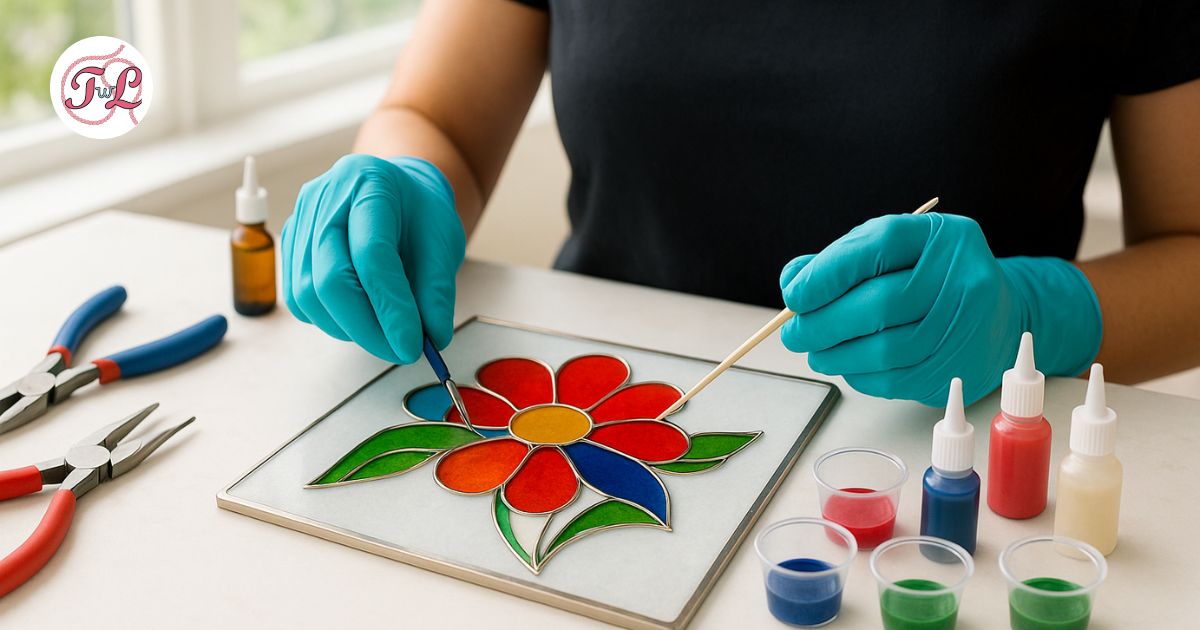
Table of Contents
Tufting is an exciting and creative process, but it can be frustrating when your rug yarn refuses to stay in the tufting cloth. This common issue can stem from a variety of factors, ranging from the type of materials you’re using to your tufting technique. Let’s explore the possible causes and solutions to help you achieve flawless results.
Common Reasons Your Yarn Won’t Stay
- Incompatible Tufting Cloth The foundation fabric you use plays a crucial role in holding the yarn securely. Monk’s cloth, primary tufting cloth, or burlap are popular choices, but not all fabrics are created equal. If your cloth has a loose weave or lacks the proper tension, it might not grip the yarn effectively.
- Incorrect Yarn Type Not all yarns are suitable for tufting. Rug yarn, which is thicker and more durable, is specifically designed for this purpose. Using yarns that are too thin or slippery can make it difficult for them to stay in place.
- Tufting Gun Issues If your tufting gun isn’t functioning properly, it can affect how the yarn is pushed through the cloth. Issues such as dull needles, incorrect settings, or improper threading can lead to inconsistent results.
- Improper Technique Tufting requires a steady hand and consistent pressure. If you’re moving the gun too quickly or at the wrong angle, the yarn may not anchor securely into the cloth.
Solutions to Keep Your Yarn in Place
- Choose the Right Tufting Cloth Invest in high-quality tufting cloth with a tight weave that’s specifically designed for tufting projects. Ensure the cloth is stretched taut on the frame to provide a stable working surface.
- Use the Correct Yarn Opt for rug yarn that’s designed to work with tufting guns. These yarns are thicker and have the texture needed to stay in place.
- Maintain Your Tufting Gun Regularly check your tufting gun for any maintenance needs. Replace dull needles, adjust the settings, and ensure the yarn is threaded correctly to avoid issues.
- Practice Proper Technique Take your time to practice and refine your tufting technique. Move the gun steadily and maintain consistent pressure to ensure the yarn anchors properly.
Additional Tips
- Experiment with different yarn tensions to find what works best for your project.
- If you’re new to tufting, consider taking a workshop to learn the fundamentals and troubleshoot common issues.
- Join a tufting community to share tips and tricks with other enthusiasts.
Conclusion
Don’t let loose yarn discourage you from exploring the art of tufting. By understanding the common causes and implementing these solutions, you’ll be well on your way to creating beautiful, durable tufted pieces. Remember, every tufting challenge is an opportunity to learn and improve your craft!

Firas
Firas is a co-founder of Tufted With Love Studio, a creative space dedicated to crafting unique, handcrafted rugs and textile art. The studio emphasizes meticulous after-tufting care to ensure each rug is ready for its new home.









